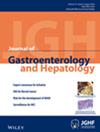Usefulness of Magnifying Endoscopy With Narrow-Band Imaging for Diagnosis of Ulcerative Colitis–Associated Neoplasia
Abstract
Background and Aim
Qualitative diagnosis of ulcerative colitis–associated neoplasia (UCAN) is crucial for surveillance colonoscopy in patients with ulcerative colitis (UC). Although the utility of magnifying endoscopy with narrow-band imaging (ME-NBI) in sporadic neoplasia diagnosis has been reported, its efficacy in UCAN remains unclear. This study aimed to evaluate the usefulness of ME-NBI for qualitative diagnosis of UCAN.
Methods
We generated 60 ME-NBI images (30 UCANs and 30 nonneoplasia lesions, including 10 polypoid and 20 nonpolypoid lesions) from patients with UC who underwent colonoscopy at our hospital between 2015 and 2023. Eleven endoscopists (seven experts and four trainees) independently assessed these images. Lesions were categorized into high- (≥ 80%), moderate- (50%–79%), and low- (< 50%) accuracy groups on the basis of the correct diagnostic rate.
Results
Overall sensitivity, specificity, and correct diagnostic rates were 66.5%, 79.0%, and 71.8%, respectively. Experts tended to exhibit higher specificity than trainees (83% vs. 70%). Polypoid lesions showed higher sensitivity (92% vs. 54%) and lower specificity (61% vs. 88%) than nonpolypoid lesions. Overall, the kappa value was 0.411. In UCAN, 37%, 37%, and 24% were classified into the high-, moderate-, and low-accuracy groups, respectively. All endoscopists assessed one case of UCAN in the low-accuracy group as a nonneoplastic vessel with a surface pattern. Only two nonneoplasias were identified as having nonneoplastic vessel and surface patterns by all endoscopists.
Conclusions
This study demonstrated the usefulness of ME-NBI for qualitative diagnosis, along with its limitations. A unique endoscopic diagnostic algorithm for UCAN, incorporating ME-NBI and other modalities, is necessary.

 求助内容:
求助内容: 应助结果提醒方式:
应助结果提醒方式:


